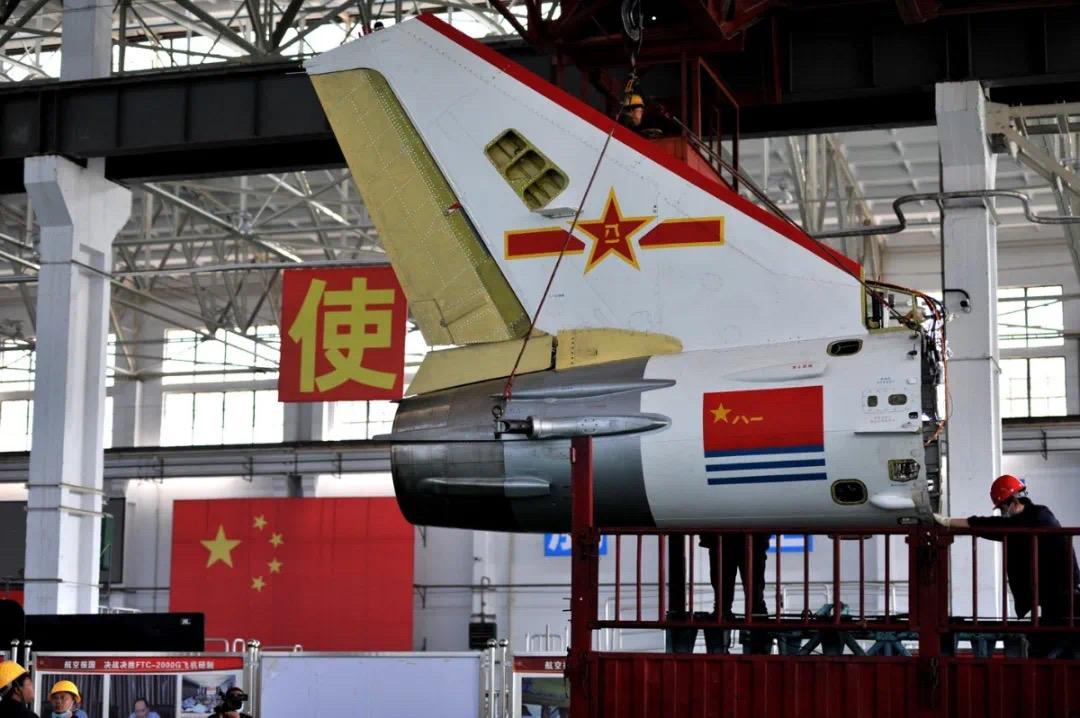
BEIJING—Avic Guizhou is developing what may be a shipboard version of its JL-9G supersonic trainer intended for use on Chinese aircraft carriers.
Separately, the state operation said it has taken a first foreign order for the JL-9G in its export configuration, the combat-capable FTC-2000G. Myanmar appears to be the customer.
The new domestic version must be only a candidate for some requirement, not yet selected for production, because Avic Guizhou speaks of trying to win a new victory with the JL-9G. Its obvious competitor would be the JL-10 from Avic Hongdu.
That requirement could be for shipboard operation, since China now trains fighter pilots to land on and take off from aircraft carriers with big and costly J-15s from Avic Shenyang, which are reportedly difficult to control.
The JL-9G, a distant derivative of the MiG-21, is already used by the Chinese navy as a land-based trainer.
Avic Guizhou said on April 19 that its flight-test department had taken delivery of a “first aircraft”—meaning the first unit of a new type or version. Photographs of the rear fuselage and wing published four days earlier showed that the design was based on the JL-9G.
The project is proceeding rapidly to its first flight, said the company, which is formally called Guizhou Aviation Industry Group; it is part of Avic.
Since the new aircraft was painted in the red and white colors used by JL-9Gs in naval service, it must be intended for the navy. Representatives of the armed forces were present when final assembly was completed earlier on April 19, Avic Guizhou said.
Moreover, the appearance of the aircraft follows a March 16 statement in which Avic Guizhou said on its social media account that it is determined to win a new victory with JL-9G development. It illustrated the social media post with a generated image of a JL-9G flying over a Chinese aircraft carrier.
Designers who created the MiG-21 as a Mach-2, high-altitude interceptor in the 1950s would have been amazed by the idea that a new derivative could arrive on Chinese aircraft carriers in the 2020s. The prospect is even more surprising when one considers that China has a modern type designed from the beginning as a trainer, the JL-10, which first flew in 2006.
But Chinese internet portal Tencent reported in 2018 that U.S. “experts” had pressured Ukraine to cease supplying the engine of the JL-10, the Motorsich AI-222-25. Russia’s Ivchenko-Progress has begun making the AI-222-25 (for the Yak-130 trainer), but cessation of Ukrainian supplies could have disrupted the JL-10 program and perhaps created an opening for an improved JL-9G.
Two changes in the design appeared in official photographs of the first aircraft of the new JL-9G version. One was deletion of external longitudinal structures for mounting the large ventral strakes that have long been a feature of the MiG-21, its J-7 Chinese copy and the JL-9 trainer derivative. The strakes were left off the JL-9G, presumably to increase angle of attack on takeoff and landing, but the mounting structures remained; now they have disappeared, saving weight.
A second change is at the base of the fin, under the rudder, where a new housing of triangular section is fitted; this replaces one of round section on the original JL-9G design.
If this version really is intended for shipboard operation, the design must have much bigger changes, including strengthening the landing gear and, probably, the airframe structure for deck impact. A suitable tail hook would be needed, too.
This implies a costly development program—and one that foreign experience suggests may not be necessary. The U.S. Navy, keeping at least 10 aircraft carriers in service, has long used dedicated training aircraft for shipboard operation, but other navies have not.
The South China Morning Post reported in December 2019 that China had suspended plans to build more than four aircraft carriers, due to cost and problems in developing an electromagnetic catapult and, for the originally intended fifth and sixth ships, a nuclear powerplant. China commissioned its first aircraft carrier, Liaoning, in 2012 and a second, Shandong, in 2019. Both have ski-jumps. A JL-9G has appeared in a seemingly authentic video taking off with a ski-jump.
The third and fourth ships will reportedly have electromagnetic catapults.
The first export order for the FTC-2000G was signed in January 2020, state media including the Guizhou Daily said, citing officials from Avic Guizhou. Delivery of the first batch is due next year. The customer is not identified but media speculate it is Myanmar, which uses several Chinese aircraft types, including the J-7. Another possibility would be Cambodia.





